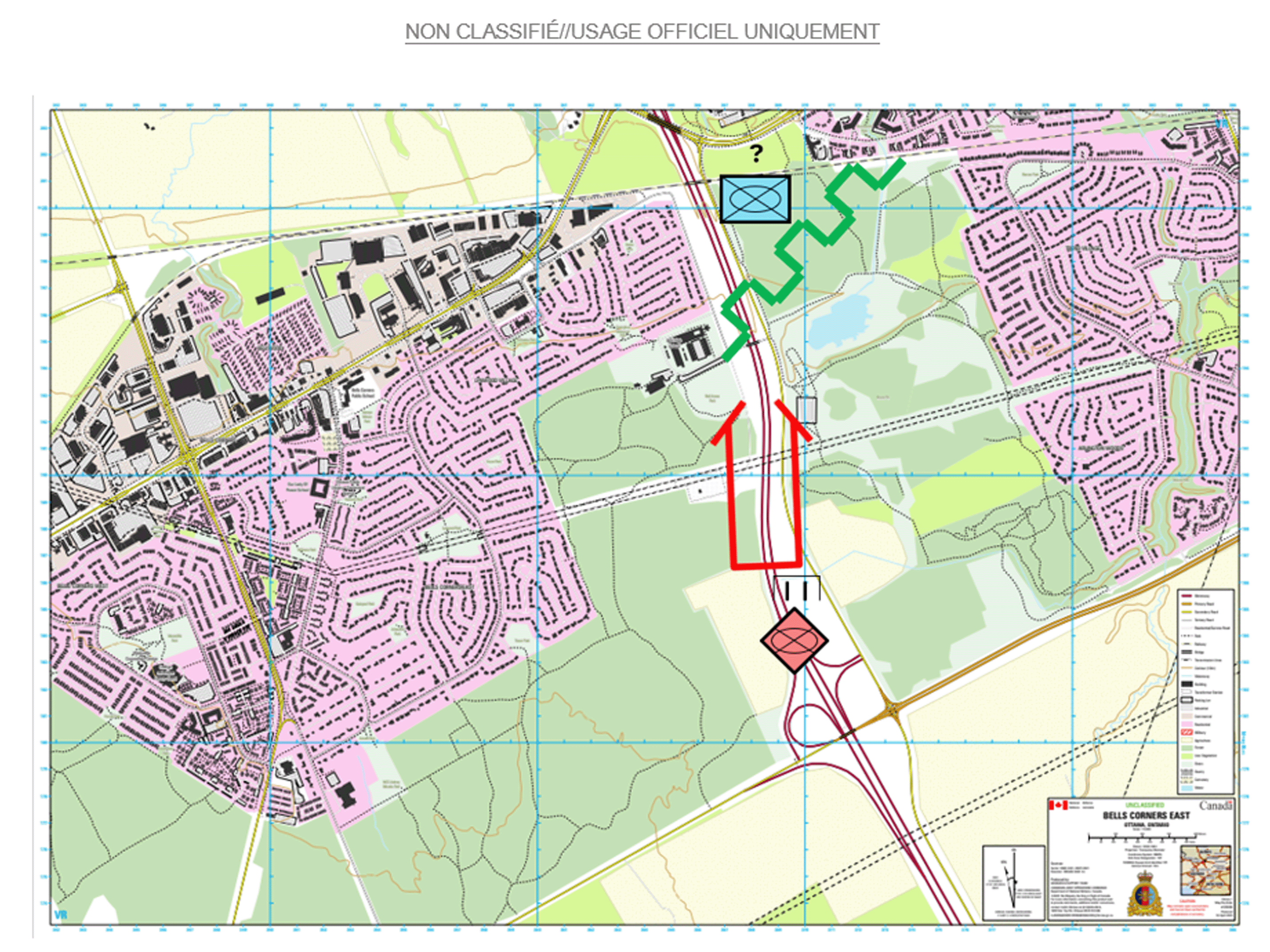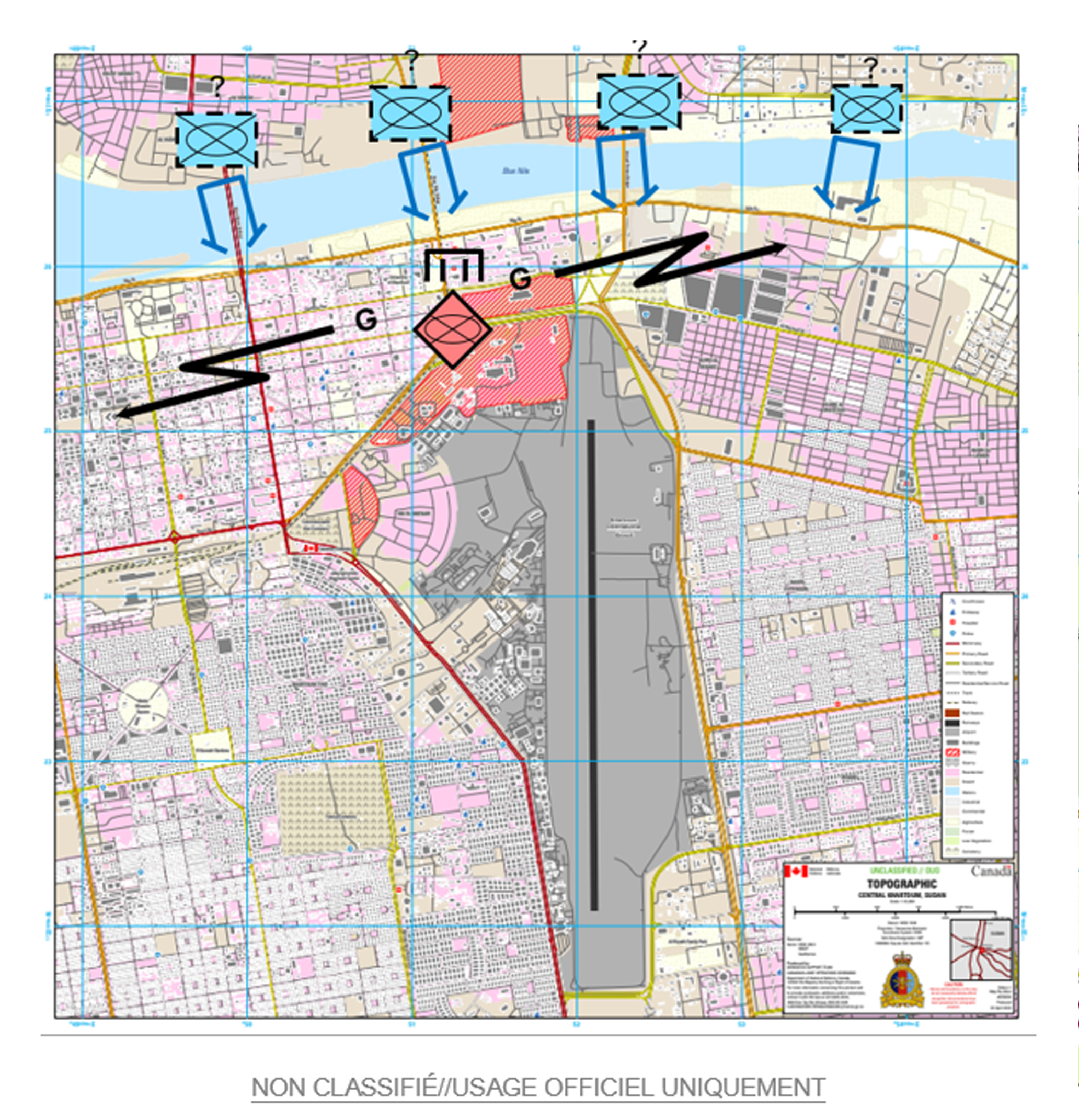
EX KRIEGSPIEL HARFANG
A Tactical Approach to IST and Junior Officer Development
By Maj Alexandre Roman - July 2nd, 2025
Reading Time: 8 min
Introduction – Wargaming as a Tool for Military Training
Wargames – whether in the form of Kriegsspiel or Tactical Decision Games (TDG) – are powerful, effective, and low-cost tools for training military personnel at all levels. They allow participants to think strategically, to plan “two levels up,” while practicing leadership “two levels down,” thereby improving mutual understanding between command echelons and their subordinates.
Beyond tactical skill development, these exercises foster bold decision-making in a consequence-free environment. They strengthen the ability to communicate clearly under pressure while providing a space where military members can experiment, learn from mistakes, and grow more confident in taking calculated risks.
Far from being a new concept, wargames are deeply rooted in military history. As early as the 19th century, the Prussian Kriegsspiel was used to train staff officers in planning and operations, leaving a lasting legacy on modern military doctrine.
Objectives of EX KRIEGSPIEL HARFANG
EX KRIEGSPIEL HARFANG (KH) was designed as a tactical training exercise intended to give commanders of Intelligence Support Teams (IST) a structured opportunity to lead their teams through a time-constrained problem-solving process. Within a guided learning framework, each team received an initial scenario displayed on a map and was tasked with developing Courses of Action (COA) for the enemy (red forces), based on the given tactical situation of friendly forces (blue forces).
While the exercise did not simulate a full order of battle or moving enemy forces, it required participants to plan with discipline and method. Participants were encouraged to apply the principles of Functional Tactics (a semi-automated method for analyzing the "enemy" factor to enable efficient Enemy COA (ECOA) development), using an online training module provided beforehand to grasp the framework and draw inspiration for their planning.
EX KH also served to support the professional development of a junior officer completing their AJSO (Army Junior Staff Officer) requirement. This officer was entrusted with the design and company-level supervision of the exercise, reinforcing their skills in collective training planning, time management, and team leadership.
Exercise Execution
EX KH unfolded over three phases, each designed to progressively develop participants’ tactical planning skills and reinforce experiential learning.
Phase 1 – Preparation: Under the supervision of the responsible lieutenant, two scenarios were selected. These were distributed to the ISTs so they could begin working through Steps 1 and 2 of the Intelligence Preparation of the Battlespace (IPB) process: defining the operational environment and describing its effects.
Phase 2 – COA Development: Each team continued with Steps 3 and 4 of the IPB, identifying threats and developing probable enemy COAs. Working independently in separate rooms, each IST was led by a master corporal acting as team commander – a role typically held by a sergeant. Then, corporals from the IST guided the soldiers through tactical reasoning and the construction of their plans.
The exercise drew on scenarios adapted from US Marine Corps TDGs, encouraging structured COA development despite limited doctrinal background. Second- and third-order effects quickly emerged in discussion, including choices of enemy systems, their roles across tactical zones (battle, disruption, security, support), and mission task verbs (MTV).
During the presentations, each IST delivered their most probable COA to the chain of command and the other team, followed by a structured discussion. The ATP-112 proved especially helpful for clarifying the subtle differences between similar MTVs, sparking debates reminiscent of AOC-level doctrinal seminars.
Phase 3 – Comparison, Discussion, and Evaluation: These sessions enabled master corporals to directly engage with the command team on the reasoning behind selected COAs, especially regarding mission verb choices (e.g., CLEAR). The command team’s (CdC) active presence helped evaluate outputs and reinforced mentoring, particularly for the organizing lieutenant.
Lessons Learned and Recommendations
EX KH was well received by the troops for its originality and engaging tempo. Several lessons emerged from this first iteration:
Spread the exercise over several days: One day for initial orders and a group demonstration, another for a full scenario, and a third for additional scenarios with reduced prep time.
Map quality matters: Use large-scale satellite and topographic maps (1:5,000 or 1:10,000).
Postpone urban scenarios: These should only be introduced once foundational skills are well established due to their inherent complexity.
Junior leadership works: Supervision by master corporals proved highly effective for guiding soldiers and nurturing group-level tactical reflection.
AJSO validation: The format worked well to support junior officer evaluation, provided the command team actively engages in mentoring and oversight.
A formal AAR was produced to inform future iterations and ease the transition for the next officer tasked with running the exercise.
Relevance for Intelligence Training
EX KH also highlighted the specific value of this format for intelligence units tasked with producing teams capable of delivering decision advantage at the battle group and formation levels. In environments where realistic training is often limited by the resource intensity of Command Post Exercises (CPX) and Field Training Exercises (FTX), a structured wargame like EX KH offers a scalable and cost-effective alternative. It enables focused development of tactical analysis, team planning cohesion, and the application of doctrinal tools without requiring extensive physical infrastructure. As such, EX KH fills a critical gap between theoretical instruction and full-scale collective training.
Conclusion
EX KRIEGSPIEL HARFANG demonstrated that even small-scale wargaming can foster deep tactical thinking, strengthen junior leadership, and energize troop engagement. Thanks to a progressive approach grounded in Functional Tactics, the exercise enabled participants to build credible COAs, improve their understanding of warfighting functions, and critically analyze doctrinal choices at all levels.
In addition to meeting IST training objectives, EX KH proved to be a valuable platform for junior officer development, while giving corporals and soldiers a unique opportunity to contribute meaningfully to tactical reasoning. The exercise deserves to be repeated and integrated into our regular training cycle, with a tiered planning structure, quality mapping resources, and strong command team involvement as both mentors and evaluators.
Finally, the increasing integration of artificial intelligence in military operations will lead to more frequent situations where personnel must make rapid decisions on problems partially analyzed or filtered by automated systems. In this emerging context, the ability to reason tactically, interpret data critically, and act with initiative remains a core skill—one that exercises like EX KH directly help to strengthen.

Related Content
| preview | 1 | title | 4 | 5 |
|---|

